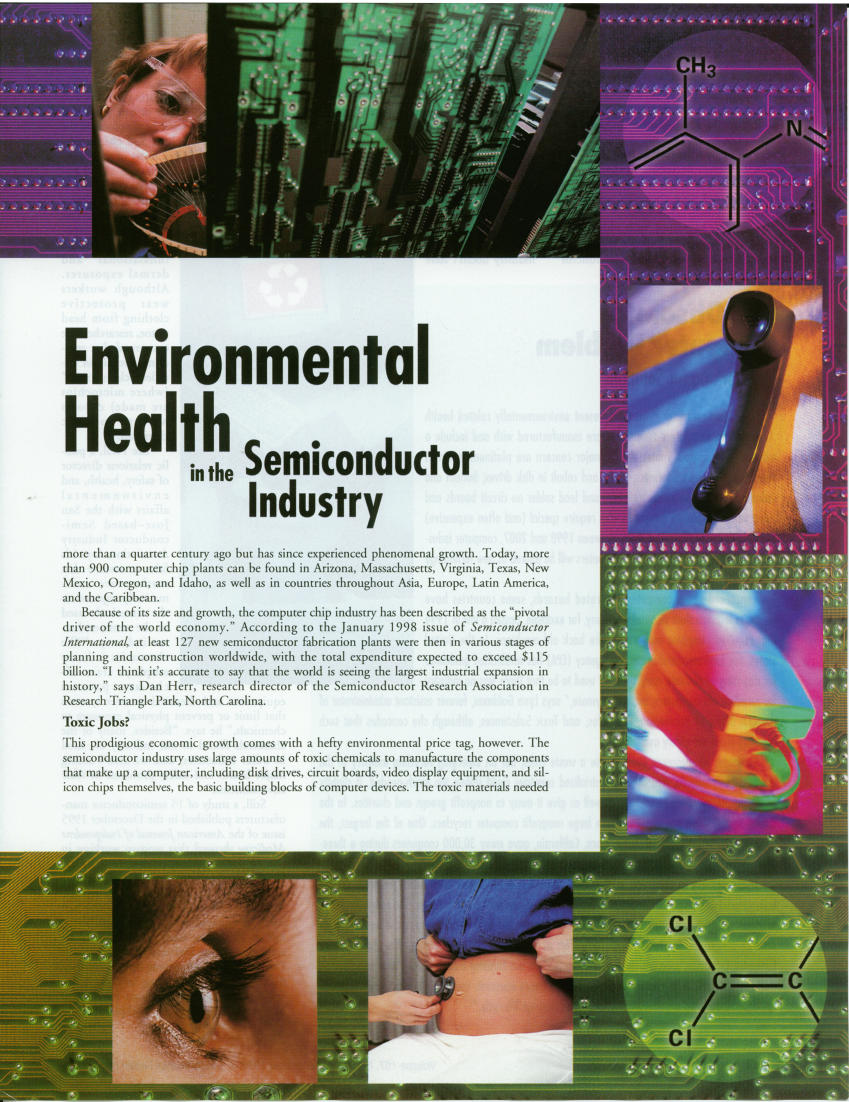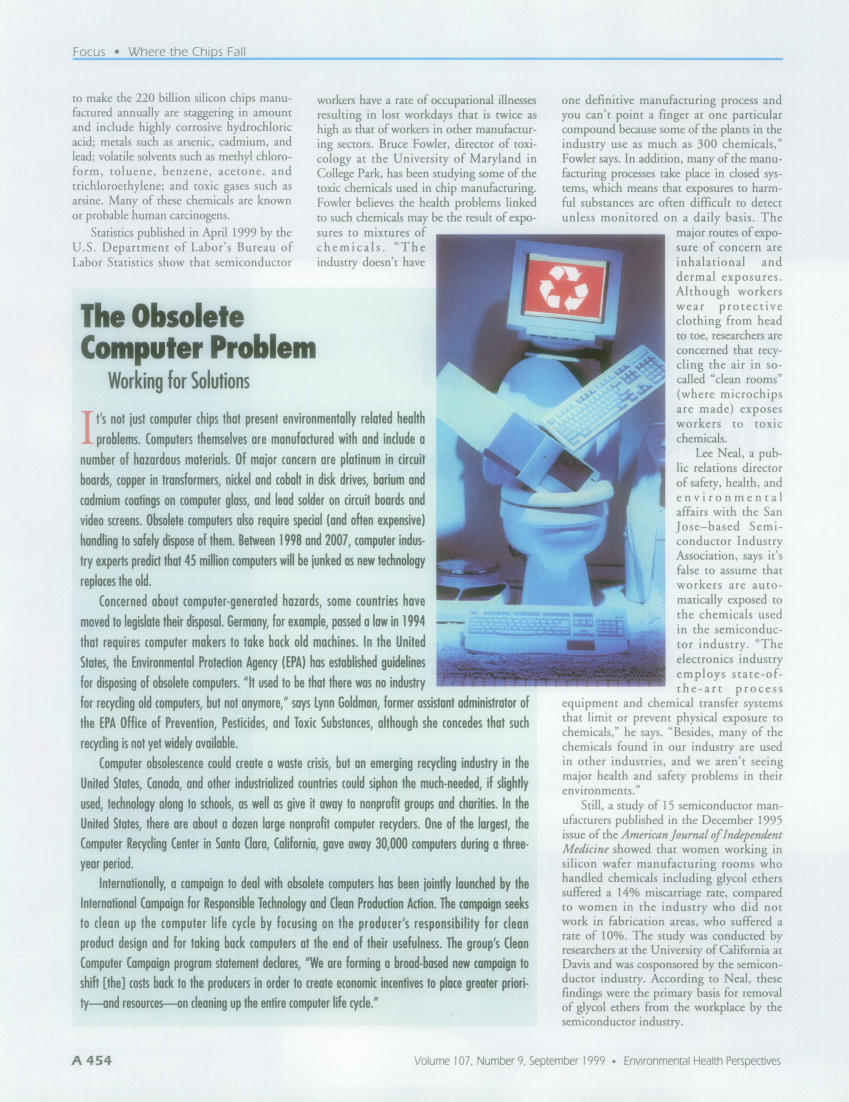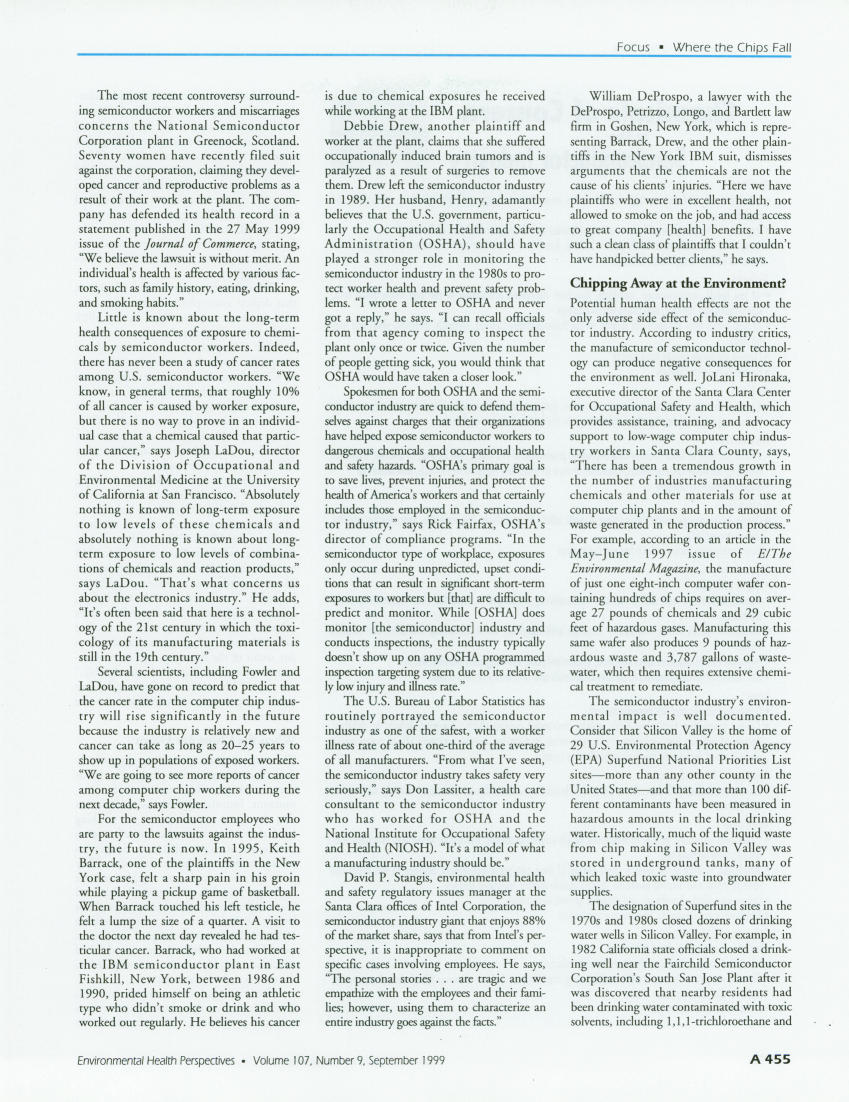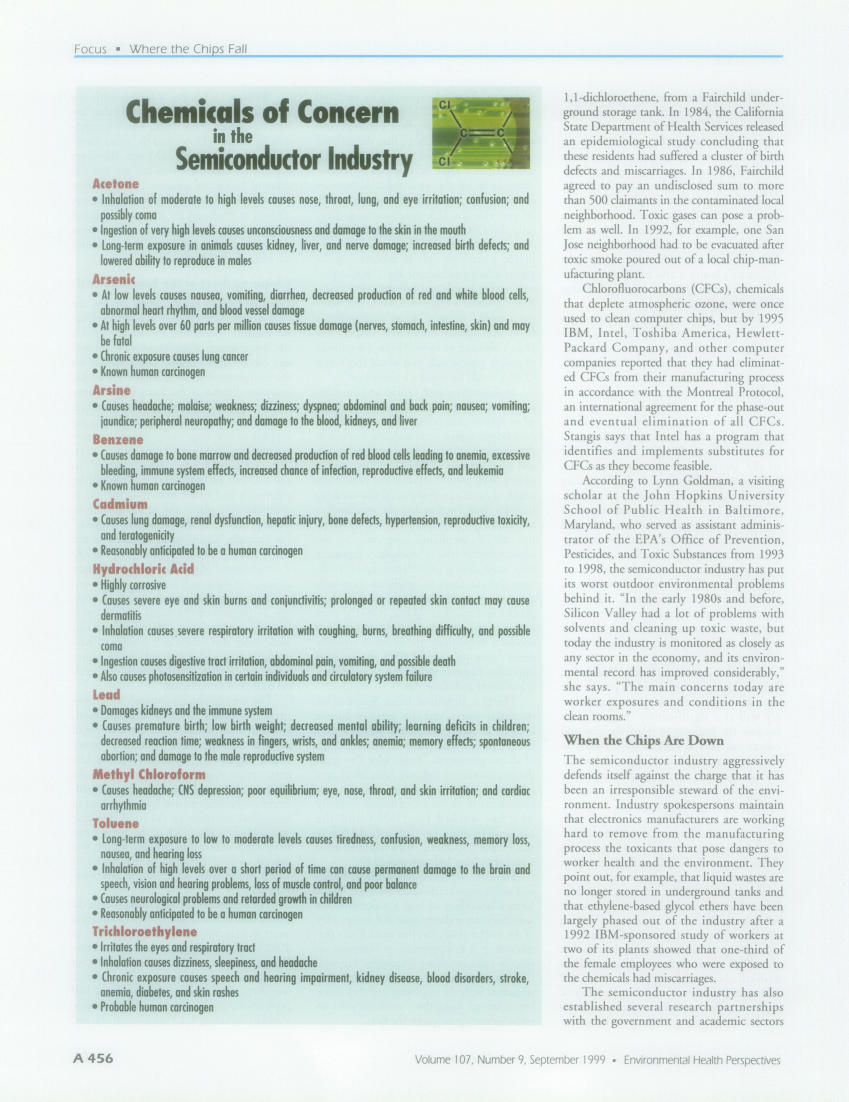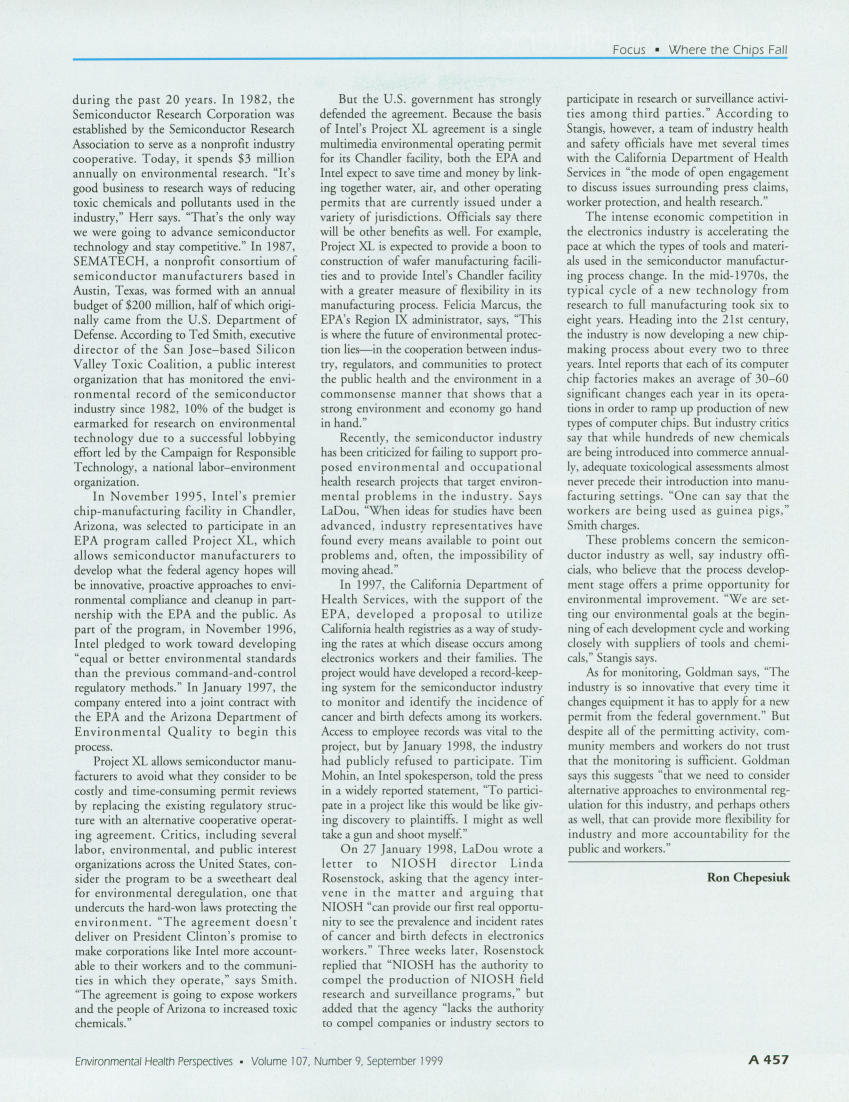Abstract
Three recent lawsuits are focusing public attention on the environmental and occupational health effects of the world's largest and fastest growing manufacturing sector-the $150 billion semiconductor industry. The suits allege that exposure to toxic chemicals in semiconductor manufacturing plants led to adverse health effects such as miscarriage and cancer among workers. To manufacture computer components, the semiconductor industry uses large amounts of hazardous chemicals including hydrochloric acid, toxic metals and gases, and volatile solvents. Little is known about the long-term health consequences of exposure to chemicals by semiconductor workers. According to industry critics, the semiconductor industry also adversely impacts the environment, causing groundwater and air pollution and generating toxic waste as a by-product of the semiconductor manufacturing process. In contrast, the U.S. Bureau of Statistics shows the semiconductor industry as having a worker illness rate of about one-third of the average of all manufacturers, and advocates defend the industry, pointing to recent research collaborations and product replacement as proof that semiconductor manufacturers adequately protect both their employees and the environment.
Full text
PDF
